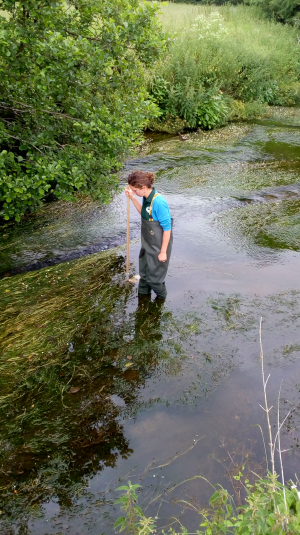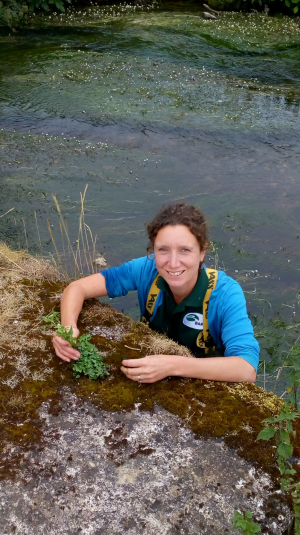BART’s ecologist, Jessy Grant, has been busy this summer with lots of exciting ecological monitoring projects for both BART and external clients. Here’s more information about some of our ecological work!:
- Case study: Wellow brook pre-restoration surveys – Summer 2017
BART carried out a suite of surveys on the Wellow brook at Stoney Littleton in summer 2017 to assess the ecological conditions of the brook before beginning river habitat restoration works in September 2017. (To read about the habitat restoration project please click here). The area where restoration was going to take place was divided into an upstream and downstream section. In each section Jess undertook one macroinvertebrate survey, one 100m macrophyte survey and a 400m River Corridor Survey covering the whole section. It is hoped that with further funding post restoration, monitoring will be carried out one year after the river restoration works to measure the changes.
Analysis of the data found that the Wellow Brook at Stoney Littleton has a good diversity of macroinvertebrates and macrophytes present. Water Framework Directive (WFD) classification results found the brook to be at “good status” for macroinvertebrates and macrophytes in the downstream stretch and “high status” for macrophytes and macroinvertebrates in the upstream stretch. Recommendations were made for river restoration works in the straight sections of the brook where flow is slow, the substrate is predominantly silt and there is heavy shading. The findings of the surveys informed the September in-stream restoration works, which helped to increase sinuosity and channel diversity in straighter sections of the channel where the flow is slower and decreased over-shading of the channel.

- Case study: Corston and Newton Brooks’ environmental assessment and walkover surveys – Spring and Summer 2017
In spring and summer of 2017 the Duchy of Cornwall funded BART to undertake environmental monitoring on the Corston and Newton Brooks, west of Bath. The aim of the monitoring was to record and assess the current environmental conditions of the brooks within the Duchy of Cornwall’s land and to make recommendations for potential improvements to the waterbodies. Monitoring included macrophyte surveys, macroinvertebrate surveys, water quality surveys, waterbody assessment walkover surveys, wet weather walkover surveys and tree surveys. The data and findings are being put together in a report for the Duchy of Cornwall, so watch this space for further information!







